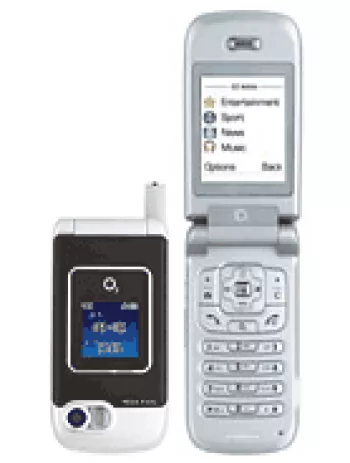
Device Overview
The O2 XDA Nova, announced in June 2007, represents a significant moment in early smartphone history. This device was designed to cater to the growing number of professionals and tech-savvy users desiring a blend of productivity and portability. With its distinct design and competitive technical specifications, it garnered attention despite being eventually discontinued. Let's delve deeper into its features and specifications.
Network Capabilities
The O2 XDA Nova operates on GSM technology, supporting 2G bands (GSM 900/1800/1900). This ensured widespread compatibility across various countries, making it a suitable choice for international travelers. Moreover, the device was equipped with GPRS Class 10 and EDGE capabilities, offering rudimentary internet connectivity options during its time.
Design and Build
With dimensions of 100 x 58 x 14 mm and a weight of 120 g, the XDA Nova was relatively compact and lightweight. It utilized a Mini-SIM design which was standard at the time. The build was sturdy enough to withstand the rigors of everyday use, and users had the option to choose between two colors: Soft Black and Wasabi Green, each offering a unique aesthetic appeal.
Display
The device featured a 2.8-inch TFT resistive touchscreen, displaying 65K colors. Although the screen-to-body ratio was approximately 41.9%, which is modest by today's standards, it was considered adequate for the time. The 240 x 320 pixel resolution provided a clear and vibrant display, suitable for basic smartphone activities.
Platform and Performance
Running on Microsoft Windows Mobile 6.0 Professional, the XDA Nova was geared towards productivity. The operating system provided users access to essential software applications and tools, making it a reliable companion for business users. Under the hood, it was powered by a TI OMAP 850 chipset coupled with a 200 MHz ARM926EJ-S processor. While not the most powerful configuration, it was sufficient for the tasks expected of smartphones in 2007.
Memory and Storage
The XDA Nova came with 128MB RAM and 256MB ROM. Although this might seem limited, it facilitated the functioning of Windows Mobile and its various applications efficiently. For additional storage, users could utilize a microSD card in the dedicated slot, with a 1 GB card typically included, offering flexibility for more files or programs.
Camera Features
The main camera was a 2 MP shooter, a standard feature during this era. It could capture decent images suitable for casual photography and quick snapshots. Video recording capabilities were also available, though the quality was basic given the technology of that time. The device did not include a front-facing, or selfie, camera which underscores the emphasis on functionality over multimedia capabilities.
Audio and Connectivity
The XDA Nova offered various alert types, including vibration and downloadable polyphonic and MP3 ringtones, enhancing personalization. While it lacked a 3.5mm headphone jack, users relied on alternatives such as miniUSB for connectivity. The device featured Wi-Fi 802.11b/g for internet connectivity, Bluetooth 2.0 for wireless file transfers, and a miniUSB for data syncing and charging.
Battery Life
Equipped with a removable Li-Ion battery of 1350mAh capacity, the Nova was designed for decent endurance. Users could expect standby time of up to 200 hours and talk time of around 3.5 hours. This was relatively standard for smartphones at this time, ensuring users could get through most of the day with moderate usage.
Additional Features
O2 XDA Nova's browser supported WAP 2.0/xHTML and HTML (PocketIE), allowing users to access the World Wide Web, although limited by the slower network speeds of the time. Even though it didn't feature GPS or radio capabilities, the inclusion of necessary PDA functionalities made it a practical tool in its era.
Market Position and Conclusion
By the standards of its release period, the O2 XDA Nova was a commendable device priced around 520 EUR. It combined essential PDA functions with mobile telephony at a time when such capabilities were influential in the professional sphere. For modern users, it serves as a nostalgic reminder of the rapid evolution in mobile technology.
Main Features of O2 XDA Nova
- Network technology: GSM with 2G bands GSM 900 / 1800 / 1900
- Compact and lightweight body with dimensions of 100 x 58 x 14 mm and weight of 120 g
- 2.8 inches TFT resistive touchscreen with 65K colors
- Microsoft Windows Mobile 6.0 Professional operating system
- Powered by TI OMAP 850 chipset and 200 MHz ARM926EJ-S CPU
- Expandable memory with microSD slot (1 GB card included)
- 2 MP main camera with video recording capability
- Wi-Fi 802.11b/g connectivity for internet access
- Bluetooth 2.0 for wireless connections
- Removable Li-Ion battery with up to 200 hours stand-by time
- Available in Soft Black and Wasabi Green colors
Disadvantages of O2 XDA Nova
- Lacks support for 3G and higher network technologies
- Discontinued status limits availability and support
- Low screen-to-body ratio with small 2.8-inch display
- Low display resolution of 240 x 320 pixels
- Outdated Microsoft Windows Mobile 6.0 OS
- Low-performance 200 MHz CPU
- Limited internal memory (128MB RAM, 256MB ROM)
- No front-facing (selfie) camera
- No 3.5mm headphone jack
- No GPS positioning capabilities
- No built-in FM radio
- Short talk time battery life (Up to 3 h 30 min)
- High launch price (About 520 EUR) with relatively low specifications

View Also
More Phones
All Rights Reserved +13666 Phones © Mobilawy 2025
























